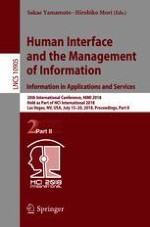2018 | OriginalPaper | Buchkapitel
Development of a Blended Learning System for Engineering Students Studying Intellectual Property Law and Access Log Analysis of the System
verfasst von : Takako Akakura, Takahito Tomoto, Koichiro Kato
Erschienen in: Human Interface and the Management of Information. Information in Applications and Services
Aktivieren Sie unsere intelligente Suche, um passende Fachinhalte oder Patente zu finden.
Wählen Sie Textabschnitte aus um mit Künstlicher Intelligenz passenden Patente zu finden. powered by
Markieren Sie Textabschnitte, um KI-gestützt weitere passende Inhalte zu finden. powered by
